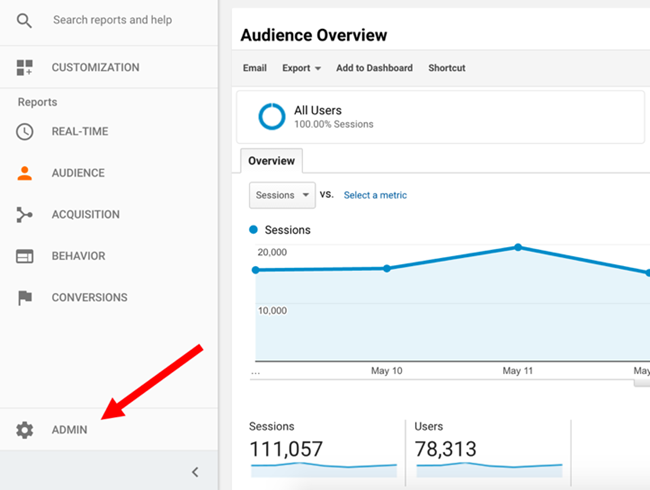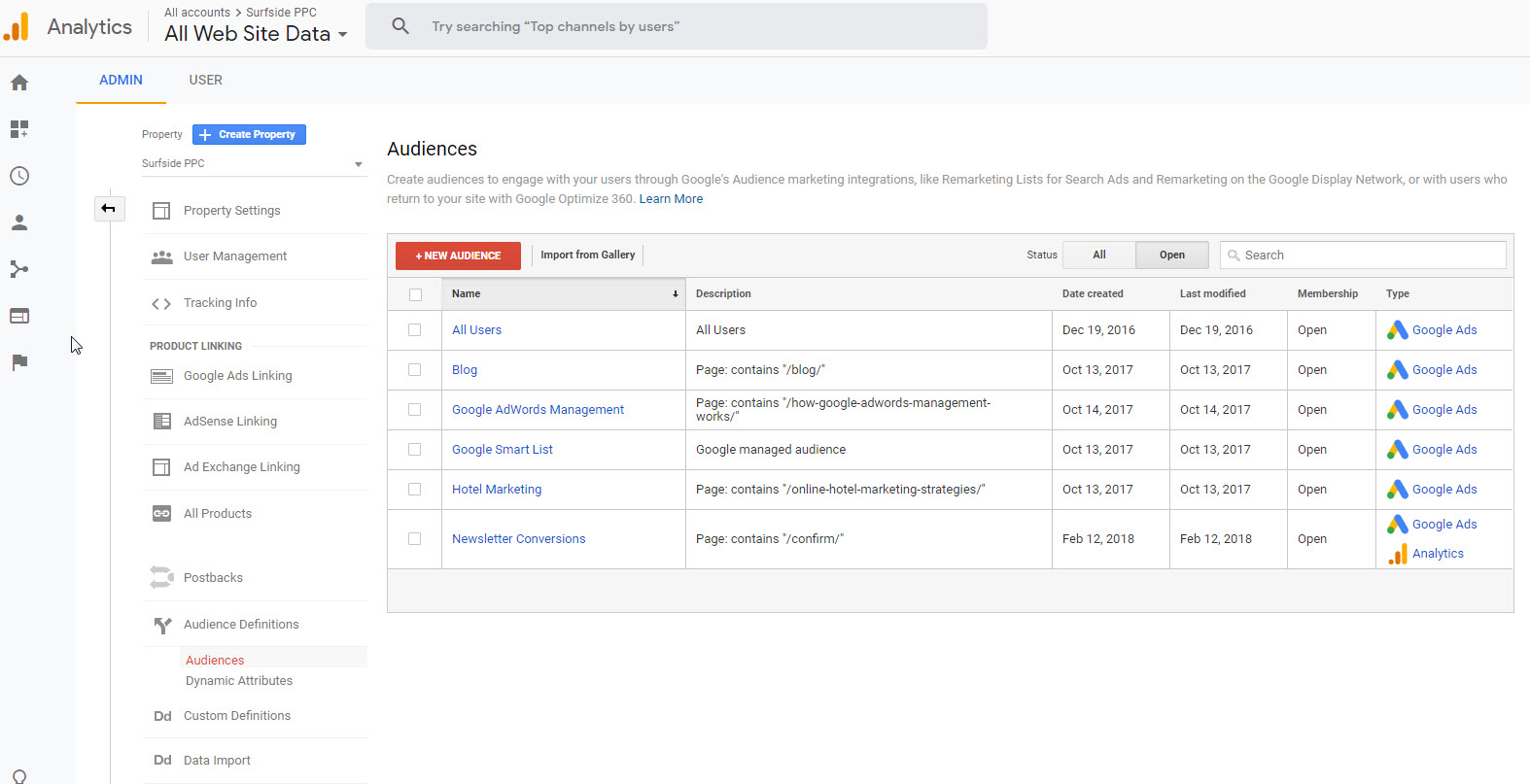Recognizing the Power of Remarketing In Google Analytics
Recognizing the Power of Remarketing In Google Analytics
Blog Article
Effective Techniques for Remarketing in Google Analytics
In the realm of digital advertising and marketing, the realm of remarketing in Google Analytics stands as a pivotal device for companies aiming to enhance their on-line presence and conversion prices. Via critical target market division, tailored remarketing checklists, and appealing ad creatives, companies can craft individualized projects that reverberate with their target market. However, the real success exists in the capability to constantly refine and optimize these approaches based on efficiency metrics and information insights. By discovering the subtleties of dynamic remarketing and leveraging innovative monitoring devices, services can unlock the full potential of their remarketing efforts, resulting in raised brand visibility and customer involvement.
Target Market Division
Making use of target market segmentation is an essential technique in optimizing the effectiveness of remarketing campaigns within Google Analytics. By separating your target market into unique teams based upon their habits, demographics, or interests, you can customize your advertising and marketing messages to be a lot more engaging and appropriate. This approach enables you to provide customized ads to details sections, enhancing the probability of conversion.

In addition, target market segmentation aids you understand the varying demands and preferences of different client groups, allowing you to craft more engaging ad creatives and offers. This targeted method not only enhances the effectiveness of your remarketing efforts yet likewise improves overall project efficiency.
Establishing Up Remarketing Checklists
To successfully carry out remarketing approaches in Google Analytics, the initial step involves developing targeted remarketing checklists based on particular target market interactions. Establishing up remarketing listings permits marketers to sector their site site visitors into different classifications based upon their habits, such as pages viewed, items looked for, or actions taken on the site. By specifying these sectors, marketers can then develop appropriate and individualized advertisements that target these particular groups, boosting the likelihood of conversion.
Remarketing checklists can be set up using different requirements such as web page brows through, duration of see, certain objective completions, or perhaps particular events activated on the website. This level of modification allows marketers to customize their promotions to match the interests and preferences of each fractional audience, resulting in greater involvement and conversion prices.
In addition, remarketing checklists can also be created based on information imported from various other sources like CRM systems, permitting also more accurate targeting. By establishing these targeted remarketing checklists, marketers can effectively reach out to potential clients that have already revealed interest in their product and services, maximizing the effect of their remarketing campaigns.
Producing Compelling Advertisement Creatives
After segmenting web site visitors into targeted remarketing listings based upon specific target market interactions, the following vital step is to craft engaging advertisement creatives that resonate with each segmented team's rate of interests and preferences. The performance of remarketing projects heavily depends on the capability of these ad creatives to capture the attention of the target market and drive them to take the desired action.
To develop engaging advertisement creatives, it is important to understand the distinct features of each segmented team (What Is “Remarketing” In Google Analytics?). Customizing the messaging, visuals, and supplies to straighten with the passions and choices of the target market can dramatically increase the possibilities of conversion. Using vibrant advertisements that immediately adjust content based upon the customer's actions can additionally boost the personalization of the advertisement experience

Monitoring Performance and Optimization
Effective monitoring of project efficiency and regular optimization are important aspects of effective remarketing strategies in Google Analytics. To guarantee the performance of remarketing projects, marketing professionals should consistently track vital performance metrics such as click-through rates, conversion prices, and return on ad spend. By keeping an eye on these metrics, marketers can get useful understandings into the efficiency of their projects and determine areas for renovation.
In Google Analytics, marketers can take advantage of devices like conversion tracking and target market division to assess the performance of their remarketing campaigns. Conversion monitoring allows marketing experts to track particular activities that individuals take after clicking a remarketing ad, offering beneficial data on the efficiency of the official site campaign in driving preferred outcomes. Target market segmentation, on the various other hand, makes it possible for marketing professionals to separate their target market right into different sections based upon various standards such as demographics, actions, and interests, permitting even more targeted and customized remarketing efforts.
Continuous optimization is necessary for making best use of the impact of remarketing campaigns. Marketing experts ought to utilize A/B screening to try out different advertisement creatives, messaging, and targeting methods to identify one of the most effective techniques. By consistently evaluating project performance data and making data-driven optimizations, online marketers can make certain that their remarketing campaigns are attaining the wanted outcomes and driving conversions successfully.
Leveraging Dynamic Remarketing
Making use of dynamic remarketing can dramatically improve the significance and influence of targeted advertisements in Google Analytics. This innovative method enables advertisers to reveal individualized ads to users who have actually previously seen their web site view publisher site or used their mobile application. By dynamically presenting products or solutions that the individuals have actually shown passion in, vibrant remarketing aids to maintain the brand name fresh in their minds and motivates them to go back to complete an acquisition.

Furthermore, dynamic remarketing projects can be automated and enhanced in real-time based upon performance information, ensuring that the ads remain efficient and relevant. By leveraging dynamic remarketing in Google Analytics, marketers can produce extra impactful and targeted ad campaign that reverberate with their audience and drive results.
Conclusion
In verdict, reliable remarketing strategies in Google Analytics include target market division, targeted remarketing listings, engaging ad creatives, efficiency surveillance, and vibrant remarketing. By concentrating on tailored look at this site ads, information analysis, and constant optimization, services can enhance conversion rates and drive interaction efficiently. Leveraging tools like conversion monitoring makes certain that advertisements stay appropriate and customized, causing general success in remarketing initiatives.
Via critical target market division, customized remarketing checklists, and engaging advertisement creatives, organizations can craft personalized projects that reverberate with their target audience. Utilizing vibrant advertisements that instantly readjust web content based on the user's habits can likewise improve the customization of the ad experience.
Conversion monitoring permits online marketers to track particular actions that users take after clicking on a remarketing advertisement, supplying valuable information on the efficiency of the project in driving desired outcomes.Making use of dynamic remarketing can substantially improve the relevance and impact of targeted advertisements in Google Analytics - What Is “Remarketing” In Google Analytics?.In final thought, reliable remarketing approaches in Google Analytics involve audience segmentation, targeted remarketing listings, compelling advertisement creatives, efficiency monitoring, and dynamic remarketing
Report this page